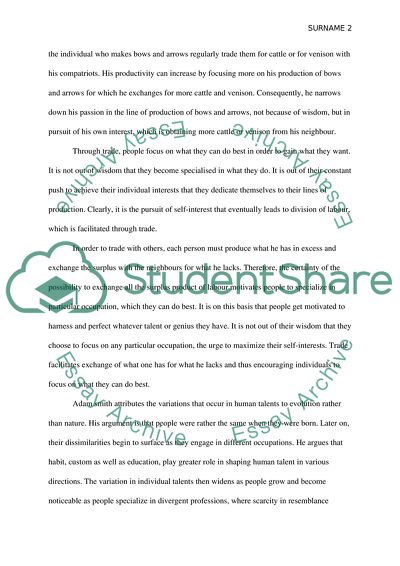Cite this document
(“Division of Labour Essay Example | Topics and Well Written Essays - 1000 words”, n.d.)
Division of Labour Essay Example | Topics and Well Written Essays - 1000 words. Retrieved from https://studentshare.org/social-science/1620310-1this-division-of-labour-from-which-so-many-advantages-are-derived-is-not-originally-the-effect-of-any-human-wisdom-which-foresees-and-intends-the-opulence-to-which-it-gives-occasion-smith-wealth-of-nations-chap-2-p-7-discuss-th
Division of Labour Essay Example | Topics and Well Written Essays - 1000 words. Retrieved from https://studentshare.org/social-science/1620310-1this-division-of-labour-from-which-so-many-advantages-are-derived-is-not-originally-the-effect-of-any-human-wisdom-which-foresees-and-intends-the-opulence-to-which-it-gives-occasion-smith-wealth-of-nations-chap-2-p-7-discuss-th
(Division of Labour Essay Example | Topics and Well Written Essays - 1000 Words)
Division of Labour Essay Example | Topics and Well Written Essays - 1000 Words. https://studentshare.org/social-science/1620310-1this-division-of-labour-from-which-so-many-advantages-are-derived-is-not-originally-the-effect-of-any-human-wisdom-which-foresees-and-intends-the-opulence-to-which-it-gives-occasion-smith-wealth-of-nations-chap-2-p-7-discuss-th.
Division of Labour Essay Example | Topics and Well Written Essays - 1000 Words. https://studentshare.org/social-science/1620310-1this-division-of-labour-from-which-so-many-advantages-are-derived-is-not-originally-the-effect-of-any-human-wisdom-which-foresees-and-intends-the-opulence-to-which-it-gives-occasion-smith-wealth-of-nations-chap-2-p-7-discuss-th.
“Division of Labour Essay Example | Topics and Well Written Essays - 1000 Words”, n.d. https://studentshare.org/social-science/1620310-1this-division-of-labour-from-which-so-many-advantages-are-derived-is-not-originally-the-effect-of-any-human-wisdom-which-foresees-and-intends-the-opulence-to-which-it-gives-occasion-smith-wealth-of-nations-chap-2-p-7-discuss-th.


